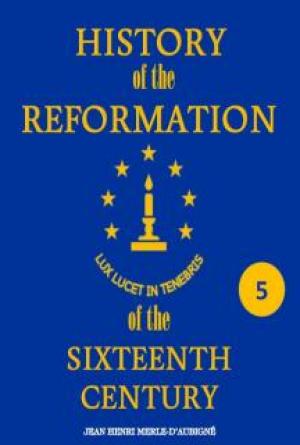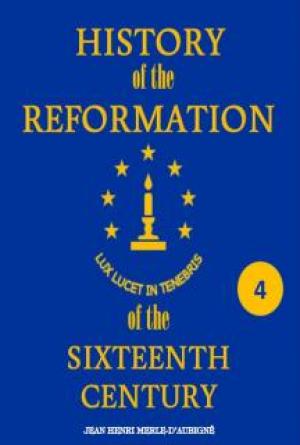French Historian
Henry Rousse attempts to explore what he and others perceive as the continuing
malady of memory of World War II in France.
When Rousso began this study, he was well aware that even half a century
after the war; the topic of Vichy France was still too troubling and too fresh
in the minds of the French populace to achieve the distance necessary to write
a strict history of the Vichy regime.
Therefore, he decided to attempt to reconstruct the ways the memory of
the Vichy regime had been repressed during the twentieth century. Additionally, Rousso attempted to interpret
the ways in which the Vichy regime had been reinterpreted to suit contemporary
needs.
Rousso depicted the period directly following
the war as a time of mourning for the French people. Then, the period under the leadership of
Charles de Gaulle during the 1960’s, he noted that the memory of the Vichy
regime was repressed which served as a catalyst for student demonstrations
which accentuated an obsession with the war and the Vichy government. Rousso points out that many diverse groups in
France interpreted the conduct of the Vichy regime and the French populace
during the war years in a multitude of ways that only added to the perceived
illness Rousso termed the “Vichy Syndrome.”
Rousso argues that the trauma France experienced
during the devastating period between 1939 and 1940 occurred so rapidly and
abruptly that it was difficult for the French people to make sense of the
changes while they were happening. This
perception helps explain why de Gaulle and the post war French government
appeared to be in denial that the Vichy government had existed during World War
II. General de Gaulle saw Vichy France
as an abnormality, an aberration and refused to believe that it was ever really
France.
Rousso asserts that General de Gaulle created
this myth of the post Vichy period when on August 25, 1944 de Gaulle
stated:
Paris! Paris humiliated! Paris broken! Paris
martyrized! But Paris liberated! Liberated by itself, by its own people with
the help of the armies of France, with the support and aid of France as a
whole, of fighting France, of the only France, of eternal France.
In respect to General de Gaulle’s August 25
proclamation, Rousso acknowledges that thanks to de Gaulle’s efforts it was a
French division that first entered Paris and it was also true that in the
southwest of France that French troops did most of the heavy lifting, however,
for de Gaulle to discount the Allie’s major role in supporting these actions
was pure fantasy. From de Gaulle’s
perspective,” the republic never ceased to exist. Free France, fighting France, [and] the
French Committee of National Liberation have by turns embodied it. Vichy was and is null and void; I myself am
the president of the government of the Republic. Why should I proclaim it?”
Some historians argue that General de Gaulle viewed the two world wars as a
single unit in order to focus on military matters and thus divert attention
from the unique aspects of World War II.
For example, the role played by irregular partisans, ideological
conflict, and the genocide were some of those unique aspects. Rousso, in his study, presents a good
argument for de Gaulle’s role in contributing to “the Vichy Syndrome” in post
war France.
Rousso wrote: “The post war citizen clung to
the reassuring image of a resisting France, but the desire for a return to
normality and the wish to forget the exceptional circumstances of the
Occupation stood in the way of any real consecration of the resistance.” This period ends with both a revival of
memories of Marshal Pétain, Vichy France and increased visibility of the
stories of survivors of the war.
In regards to some of the divisions in French
society Rousso wrote: “When the French public is asked about actual or possible
political decisions bearing on wartime memories, the results are diverse. The public is even less capable than the
politicians of dealing rationally with symbols stemming from the 1940s.”
Rousso cites a survey of opinion that was conducted in 1971 over the transfer
of Pétain’s ashes to Douaumont. The
survey revealed that seventy two percent approved and of those twenty six
percent were in favor because they believed it would do justice to the man, Pétain;
twenty one percent believed it was time to forgive and forget; and twenty five percent
believed that the transfer would cause no problems. Eleven percent was adamantly opposed and
seventeen percent had no opinion.
Surveys like this further accentuate the division of opinion in French society
over the reality and legitimacy of the Vichy regime. However, it should be noted that Pétain’s
choices in 1940 were extremely limited as he was faced with the daunting
problem of what he perceived as saving France’s national sovereignty or
capitulate to France’s traditional and long standing enemy Germany and lose all
national identity.
Rousso contends that internal quarrels left
deeper scars than either the defeat or German occupation. He suggests three structural factors “that
make this crisis an archetype of Franco-French conflict have also shaped the
way it has been remembered since the end of the war.” The first is the role traditional
Catholicism played in shaping and sustaining a Pétainist view of history. Rousso points out that after 1951 many of
the original hard core Pétain supporters were joined by others from various
parts of the political spectrum, including members of the resistance. Rousso wrote: “In other words, Pétainism, in
this interpretation, was a kind of ideal for those who in one way or another
remained loyal to some form of a counterrevolutionary Catholic tradition.” The second structural factor was
ideological and had to do with the nature of traditional political divisions in
France. The right-wing and extreme
right-wing led the way for Vichy France but were joined by members of the left
who embraced the fascist totalitarian methods and ideology of the regime. Importantly, the third structural factor
affecting the Vichy syndrome was anti-Semitism. The reality that these divisions exist in
traditional French society provide further evidence that the Vichy regime was
more in line with the democratic principles of the Allied cause even though
circumstances dictated collaboration with Nazi Germany and the Axis
powers. Even so, there were key members
of the Vichy regime who were ready and did aid the Allied cause.
In conclusion, the opportunities for
collaboration and resistance in Vichy France during World War II were affected
by one’s location. Resistance in the
Northern Zone was much more difficult due to the presence of German soldiers
and authorities. However, if one resided
in the Southern Zone the absence of occupying German soldiers until November 1942
made it more difficult to convince the ordinary citizens to resist. This
allowed the citizens of the south to form a stronger allegiance to the Vichy
government. Many of the French still had
a strong affection to Marshall Pétain.
It should be noted that in the period before November 1942 many
historians have debated if the resistance to the Germans was different or the
same as the resistance to the Vichy regime.
In the south there is evidence that it was not the same but in the north
it arguably was the same. After November
1942, resistance to the Germans became much stronger in all of France.
Chronology and geography both affected
collaboration and resistance during the Vichy years. During these years the chronology of events
must be considered because of the wider developments of the war outside of
Vichy were of extreme importance. For
example, when Hitler broke the non-aggression pact of 1939 with Stalin and the
USSR in June 1941 and launched Operation Barbarossa the French communist
quickly joined the resistance.
There
was little similarity between Vichy France in 1940 and what it had become in 1944. As time went on during the war, the Vichy
regime became increasingly repressive.
This caused the populace to resent the Vichy government even more and
demanded the Germans out of France at all cost.
There is arguably little doubt that the Vichy years are extremely
complex but the evidence before, during and after the invasion of North Africa
in 1942 prove a significant number of Vichy leaders and a large portion of the
populace of Vichy France and in the North African colonies did aid the Allied
cause.
As a result, some Vichy leaders and some Vichy
French citizens aided the Allies during World War II. Their collaboration with the Allies before
and during the invasion of North Africa was essential. Intelligence gathering by the Vichy was part
of their collaboration. Their active
participation in supporting the Allies after Germany occupied southern France
helped the Allies defeat Hitler and the Nazi regime. Post war memories of Vichy France
differ. These various differences of
opinion contribute to “The Vichy Syndrome”.
BIBLIOGRAPHY
Adler, Jacques. “The Jews and Vichy: Reflections on
French Historiography.” The Historical Journal. 4 (December, 2001): 1065-1082.
Bender, Reinhold. Review by Henning Kohler
"Collaboration In France During The Second World War." Contemporary European History. 4, (1995,
March 1): 326-345.
Biddiscombe, Perry. “The Last White Terror: The Marquis Blanc and Its Impact in
Liberated France, 1944-1945.” The Journal
of Modern History. Vol. 73, no.4 (December 2001): 811-861.
Bloch, Marc. Strange
Defeat: A Statement of Evidence Written in 1940. Translated by Geraid
Hopkins. New York: Norton &
Company, 1968.
Boswell, Laird. "Should France Be Ashamed Of Its
History? Coming To Terms With The Past In France And Its Eastern
Borderlands." Totalitarian Movements
& Political Religions. 9, (2008, September 1): 237-251.
Clark, Mark.
Letters and correspondence of General Mark Clark found at The Citadel in
the archives. Charleston, South Carolina.
Cohen, Roger, "U.S. Historian Relates How Vichy
France Served Nazis," New York Times
(New York), sec. 1-A3, November 1, 1997.
Fruness, Hannah, "Allied Forces 'planned To Arm
Vichy France In World War Two', Secret Documents Reveal," Telegraph Media Group Limited, March 19,
2012.
Funk, Arthur, “Eisenhower, Giraud, and the Command of
‘Torch.” Military Affairs 35, no.3
(October 1971): 103-108. America: History
and Life with Full Text, EBSCOhost
(accessed April 25, 2013).
Funk, Arthur. "Negotiating The 'deal With Darlan’."
Journal of Contemporary History. 8,
no.2, (1973, April 1): 81-117.
Funk, Arthur. “The ‘Anfa Memorandum’: An incident of
the Casablanca Conference,” The Journal
of Modern History, Vol. 26, No. 3 (Sep., 1954), pp. 245-254.
Gordon, Bertram. "Vichy Syndrome' Problem in
History." French Historical Studies.
19, no.2, (autumn 1993): 495-518.
Gottschalk, Louis. "Our Vichy Fumble." The Journal of Modern History. 20, no.
1, (1948, March 1): 47-56.
Kitson, Simon. "Spying For Germany in Vichy
France." History Today. 56,
no.1, (2006, January 1): 38-45.
Kitson, Simon. “Enthusiasm to Disenchantment: The
French Police and the Vichy Regime, 1940-1944.” Contemporary European History. Vol. 11, no. 3 (August 2002):
371-390.
Langer, William. Our
Vichy Gamble. New York: Alfren Knoph, 1947.
Matloff, Maurice. “Allied Strategy in Europe,
1939-1945.” In Makers of Modern Strategy:
from Machiavelli to the Nuclear Age, edited by Peter Paret, 667-702.
Princeton: Princeton University Press, 1984.
Paxton, Robert. Vichy
France: Old Guard and New Order 1940-1944. New York: Columbia University
Press, 1972.
Porch, Douglas.
The Path to Victory: The Mediterranean Theater in World War II. New York:
Farrar, Straus and Giroux, 2004.
Rousso, Henry. The
Vichy Syndrome: History and Memory in France since 1944. Translated by
Arthur Goldhammer. Cambridge, MA and London: Harvard University Press, 1991.
Rousso, Henry, Golsan, Lucy and Golsan, Richard J. “The
Political and Cultural Roots of Negationism in France,” South Central Review.
23, No. 1. Fascism, Nazism: Cultural Legacies of Reaction (Spring, 2006):
67-88.
Stoddard, Brooke. The
World in the Balance: The Perilous Months of June-October 1940. Washington,
D.C: Potomac Books, 2011.
Varley, Karine. "Between Vichy France and Fascist
Italy: Redefining Identity and the Enemy in Corsica during the Second World
War." Journal of Contemporary
History. 47, no.3, (2012, July 6): 505-527.
Vaucher, Paul. “The ‘National Revolution’ in France,” Political Science Quarterly. Vol. 57,
no.1 (March 1942): pp. 7-27.
Walker, David. "Oss and Operation
Torch." Journal of Contemporary
History. 22, no.4, (1997, October 1): 667-679.







